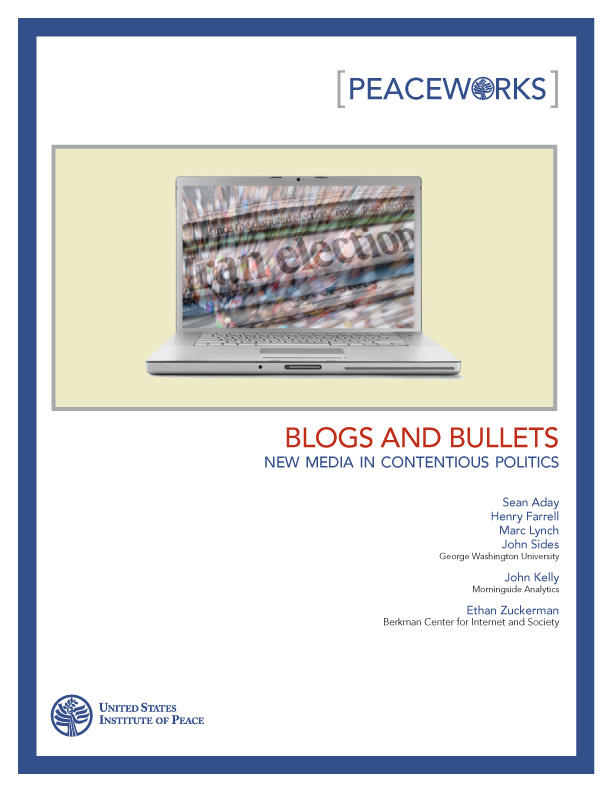In this report from the United States Institute of Peace’s Centers of Innovation for Science, Technology, and Peacebuilding, and Media, Conflict, and Peacebuilding, a team of scholars from The George Washington University, in cooperation with scholars from Harvard University and Morningside Analytics, critically assesses both the “cyberutopian” and “cyberskeptic” perspectives on the impact of new media on political movements.

Summary
- New media, such as blogs, Twitter, Facebook, and YouTube, have played a major role in episodes of contentious political action. They are often described as important tools for activists seeking to replace authoritarian regimes and to promote freedom and democracy, and they have been lauded for their democratizing potential.
- Despite the prominence of “Twitter revolutions,” “color revolutions,” and the like in public debate, policymakers and scholars know very little about whether and how new media affect contentious politics. Journalistic accounts are inevitably based on anecdotes rather than rigorously designed research.
- Although data on new media have been sketchy, new tools are emerging that measure linkage patterns and content as well as track memes across media outlets and thus might offer fresh insights into new media.
- The impact of new media can be better understood through a framework that considers five levels of analysis: individual transformation, intergroup relations, collective action, regime policies, and external attention. New media have the potential to change how citizens think or act, mitigate or exacerbate group conflict, facilitate collective action, spur a backlash among regimes, and garner international attention toward a given country.
- Evidence from the protests after the Iranian presidential election in June 2009 suggests the utility of examining the role of new media at each of these five levels.
- Although there is reason to believe the Iranian case exposes the potential benefits of new media, other evidence—such as the Iranian regime’s use of the same social network tools to harass, identify, and imprison protesters—suggests that, like any media, the Internet is not a “magic bullet.” At best, it may be a “rusty bullet.” Indeed, it is plausible that traditional media sources were equally if not more important.
- Scholars and policymakers should adopt a more nuanced view of new media’s role in democratization and social change, one that recognizes that new media can have both positive and negative effects.
About the Report
In this report from the United States Institute of Peace’s Centers of Innovation for Science, Technology, and Peacebuilding, and Media, Conflict, and Peacebuilding, a team of scholars from The George Washington University, in cooperation with scholars from Harvard University and Morningside Analytics, critically assesses both the “cyberutopian” and “cyberskeptic” perspectives on the impact of new media on political movements. The authors propose a more complex approach that looks at the role of new media in contentious politics from five interlocking levels of analysis: individual transformation, intergroup relations, collective action, regime policies, and external attention. The authors are particularly indebted to Sheldon Himelfarb of the Centers of Innovation for his support and contributions to this project. The authors would also like to thank research assistants Brett Borrowman, Juliet Guaglianone, Chris Mitchell, and Rachel Whitlark.